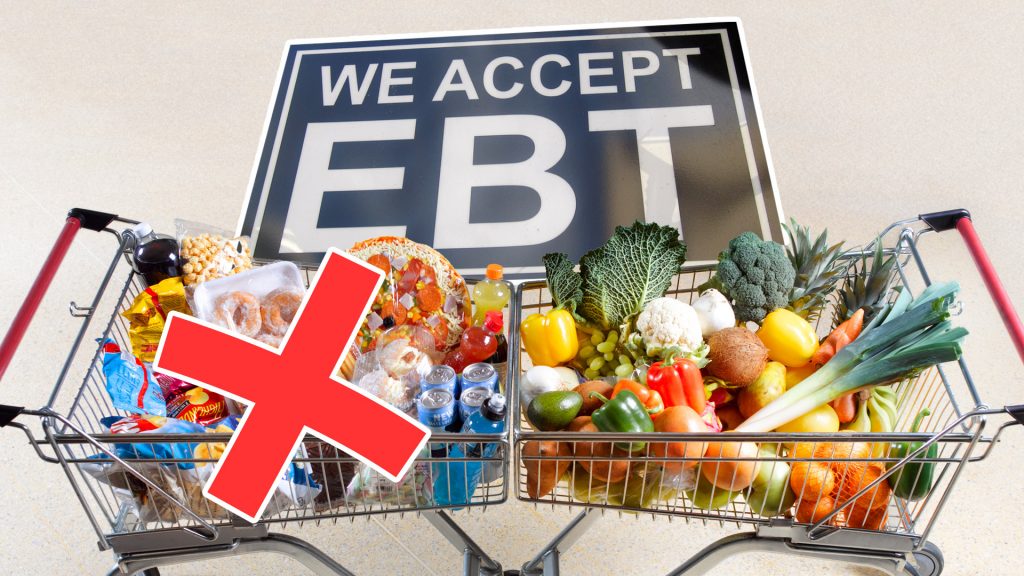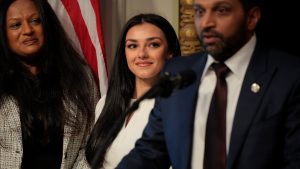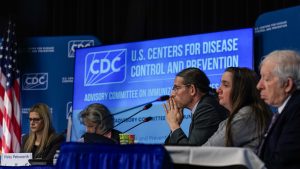SNAP changes in 2026 reshape how millions stretch their monthly benefits

For millions of Americans, the Supplemental Nutrition Assistance Program, also known as SNAP, is more than just a monthly payment. It’s the difference between hunger and hope. Beginning in 2026, families will face new rules that require them to pay out-of-pocket for certain items.
The federal government spends nearly $100 billion annually on the program, providing an average of $187 per participant each month.
Dawn Pierce was once among the millions who, as she said, needed “some help to survive.” After she lost her job in 2009, during one of the toughest economic downturns in recent history, Pierce relied on SNAP for 17 months.
Even with a fridge and freezer full of groceries, Pierce told Straight Arrow News that she still remembers the judgment she experienced in the check-out line when using SNAP.
“Hunger isn’t about laziness,” she said. “It isn’t about poor choices.”
Today, she works for the nonprofit Hunger Free America, helping families navigate the program and turn survival stories into advocacy.
“You can’t do anything if you’re hungry, and if we don’t address hunger in its root causes, every other system in our lives fail,” Pierce said.
Who SNAP serves
SNAP is designed to reach households in poverty. According to the USDA, 73% of SNAP households have incomes at or below the poverty line. Most benefits go to the neediest: 86% of all SNAP dollars support families with incomes below the poverty level, and more than half of that goes to households making less than 50% of the poverty threshold.
The program feeds an average of 41.7 million Americans each month. Yet the monthly benefit often falls short of covering the cost of groceries. In 2024, SNAP participants received an average of $2,246 per year, about 29% below the average per capita grocery spend at $3,168 that year, according to the USDA.
States start to restrict SNAP
In May, Nebraska became the first of many states to restrict what can be bought with SNAP benefits, banning items such as soda, candy and energy drinks with the help of the USDA. Nebraska Gov. Jim Pillen, R, and the U.S. Department of Health and Human Services said the new rules are designed to nudge families toward healthier choices and curb rising obesity rates.
Pillen pointed to a University of Nebraska study that found 7 in 10 Nebraskans struggle with obesity.
In a statement to Straight Arrow News, a USDA spokesperson said Nebraska’s waiver “is a monumental step to Make America Healthy Again and means billions of taxpayer dollars per year that have long subsidized unhealthy food and beverages will start to be preserved for healthier options.”
Nebraska isn’t alone; other states, including Arkansas, Indiana, Colorado, Florida, Idaho, Louisiana and Iowa have also partnered with the USDA to block the use of SNAP funds for purchasing sugary drinks and other items.
Will restrictions improve health?
It is not yet clear whether increasing restrictions on SNAP will translate to healthier Americans. Kate Bauer, associate professor of nutritional sciences at the University of Michigan, said the evidence shows that restrictions often have little effect.
“While we see some reductions in the amount of sugar-sweetened beverages purchased when people get look-alike SNAP benefits with restrictions, overall, it does not change their intake of sugar-sweetened beverages, and it doesn’t change health outcomes,” Bauer told SAN.
Bauer also noted the personal and social burden placed on recipients.
“It’s putting the burden on individuals, and it’s putting that burden of not having access to certain products, on the individuals who are the most nutritionally and socially and physically vulnerable,” she said.
Robert Paarlberg, an associate at Harvard University’s Sustainability Science Program, told SAN that there is limited data to indicate whether this approach will meet the government’s intended goals, because states have historically been denied permission to test the effects of restricting sugary beverages. Paarlberg likened the current push to a pilot program that would test whether limiting sugary beverages could improve public health.
“It would be much better to find a state, an entire state, or a significant portion of a state, and test out this speculation, this hypothesis that health would improve if you remove sugary beverages from foods eligible for purchase,” he said.
Unbiased. Straight Facts.TM
Out of around 41 million Americans using SNAP, 66% of those receiving benefits include families with children, while nearly 42% are working families.

Paarlberg emphasized the importance of context.
“Historically, sugar-sweetened beverages have been a leading contributor to excessive sugar consumption and the obesity crisis in the United States. I mean, currently, 40% of American adults are clinically obese,” he said.
But the American Beverage Association’s opposition to the new restrictions cited a 42% drop in the calories Americans consume from beverages in recent years. According to the association, 60% of drinks Americans buy now contain zero sugar.
Looking ahead to the future
SNAP restrictions are tied to state waivers and the federal Farm Bill, the legislative package that governs U.S. food and agriculture policy. Congress has been deadlocked on the bill, leaving states to test new approaches in partnership with the USDA.
“Congress is paralyzed on so many things, especially in our nutrition policy, because the SNAP Program has always been a part of the Farm Bill, and we don’t have a Farm Bill, Paarlberg told SAN.
Each state with a USDA-approved waiver will officially ban the purchase of sugary beverages and energy drinks using SNAP benefits starting in 2026.
The post SNAP changes in 2026 reshape how millions stretch their monthly benefits appeared first on Straight Arrow News.





